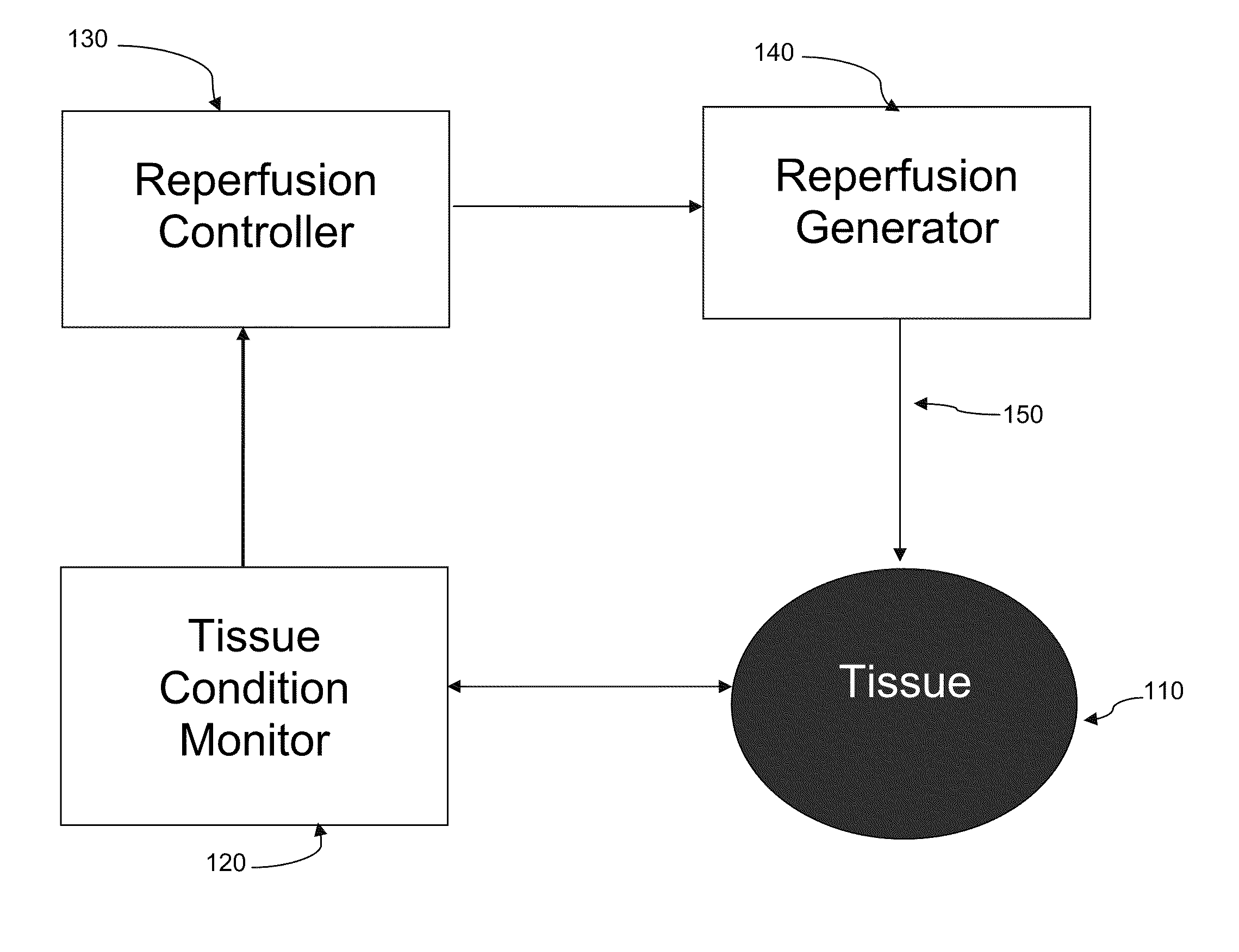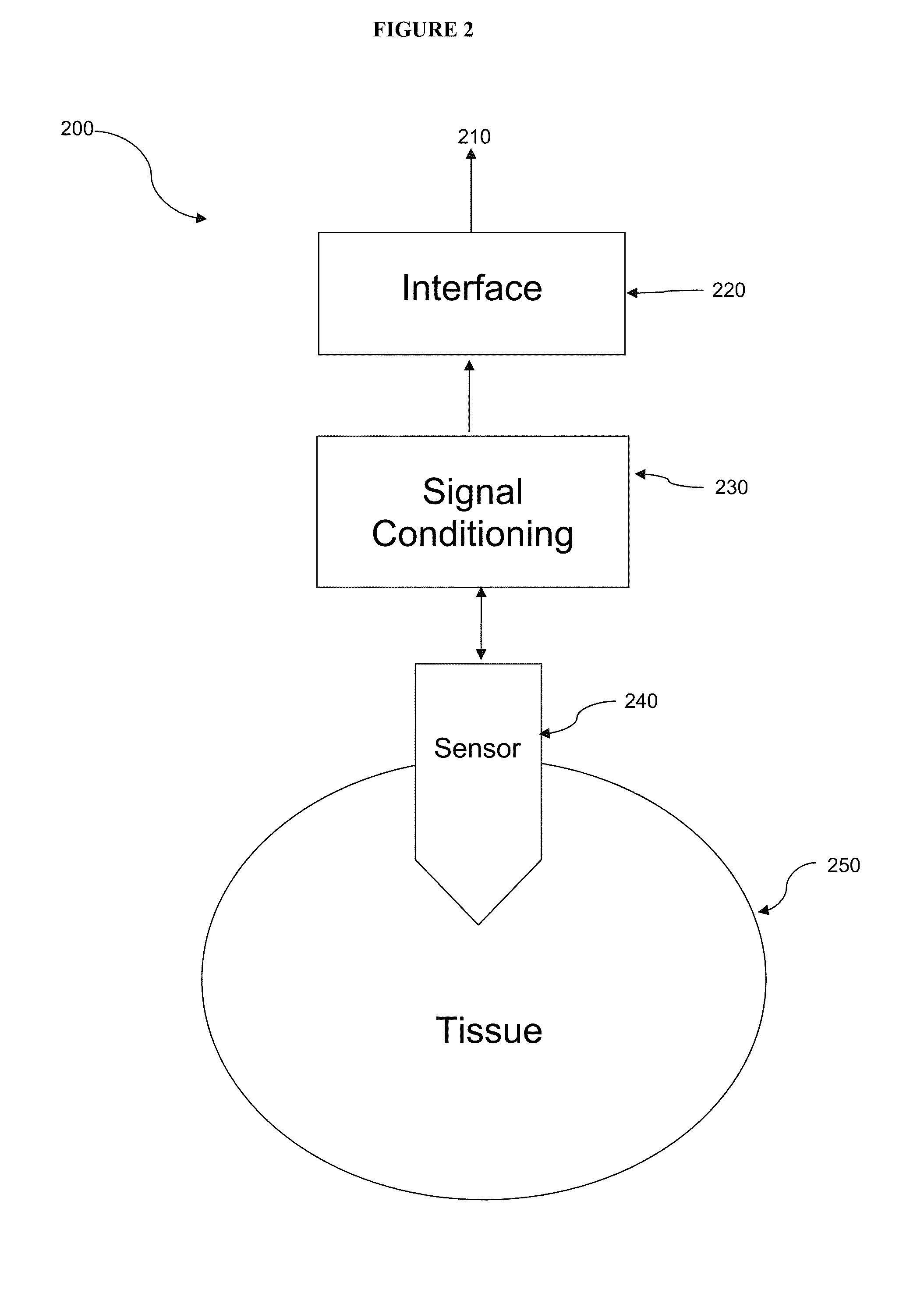Method and Apparatus for Cardiac Tissue Monitoring and Catheter-Based Perfusion for Mitigating Acute Reoxygenation Injury
- Summary
- Abstract
- Description
- Claims
- Application Information
AI Technical Summary
Benefits of technology
Problems solved by technology
Method used
Image
Examples
Embodiment Construction
[0028]The present invention is based on a recognition that reoxygenation of previously ischemic tissues should be modulated in response to local conditions and based, further, upon an appreciation that such conditions change dynamically during pharmacological and mechanical alterations of the circulatory system. The methods and apparatus described herein provide a tool that can respond to the local tissue environment of the ischemic heart by measuring both the antecedent and dynamically changing condition of the tissue affected by the existent ischemia and ongoing reperfusion; then controlling oxygen levels of the reperfusate as a function of time during re-introduction of oxygen. As recovery begins, it is intended that this apparatus and method allow ongoing adjustment of perfusate oxygen levels in response to the actual conditions of that ischemic tissue. This is in contrast to existing techniques that estimate or that simply ignore the tissue condition.
[0029]Indeed, under existin...
PUM
 Login to View More
Login to View More Abstract
Description
Claims
Application Information
 Login to View More
Login to View More - R&D
- Intellectual Property
- Life Sciences
- Materials
- Tech Scout
- Unparalleled Data Quality
- Higher Quality Content
- 60% Fewer Hallucinations
Browse by: Latest US Patents, China's latest patents, Technical Efficacy Thesaurus, Application Domain, Technology Topic, Popular Technical Reports.
© 2025 PatSnap. All rights reserved.Legal|Privacy policy|Modern Slavery Act Transparency Statement|Sitemap|About US| Contact US: help@patsnap.com



